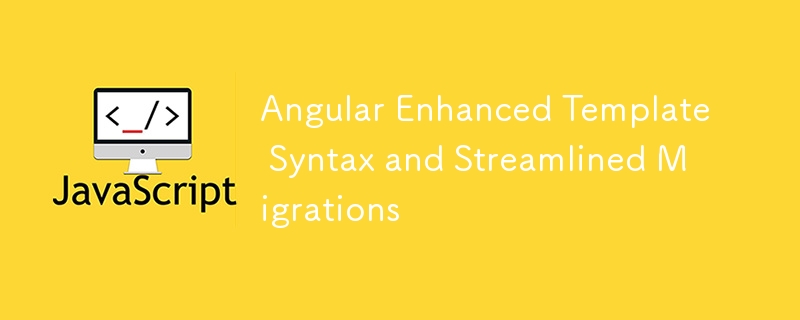

Angular 18.2 has arrived, and while it may be a minor release, it holds some valuable improvements that enhance developer experience. This article delves into these exciting features, focusing on the refined @let syntax and the introduction of new migration schematics.
The @let syntax, a personal favorite among many Angular developers, continues to evolve in 18.2. It offers two distinct approaches to defining template variables, bringing greater flexibility and readability to your code:
Dynamic @let: Embrace the ability to utilize template reference variables within @for and @if directives. Imagine effortlessly accessing a form's value within the template:
1 2 |
|
Async @let: In previous versions, accessing the latest value emitted from an observable required an ngIf directive.
1 2 3 4 5 6 7 8 9 |
|
Now, achieve the same result with fewer lines and improved clarity
1 2 3 4 5 6 7 |
|
Remember, @let variables are read-only and cannot be reassigned. However, their values will automatically update with each change detection cycle. While using the same names within the template and class component is technically possible, the long-term implications of this practice require further exploration.
Starting with Angular 17, we encountered three primary migration schematics:
Angular 18.2 expands this toolkit with even more helpful tools:
Angular 18.2 may be a minor release, but it offers significant improvements for those who enjoy working with @let and appreciate streamlined migration processes. As we eagerly anticipate the major features planned for Angular 19 in November 2024, version 18.3, arriving in the next six weeks, promises to be another exciting stepping stone. So, keep calm, keep coding, and embrace the advancements in Angular!
The above is the detailed content of Angular Enhanced Template Syntax and Streamlined Migrations. For more information, please follow other related articles on the PHP Chinese website!
 How to make gif animation in ps
How to make gif animation in ps
 windows explorer has stopped working
windows explorer has stopped working
 What are the DDoS attack tools?
What are the DDoS attack tools?
 504 Gateway Time out causes and solutions
504 Gateway Time out causes and solutions
 unicode to Chinese
unicode to Chinese
 What is the shortcut key for copying and pasting ctrl?
What is the shortcut key for copying and pasting ctrl?
 How to calculate the refund handling fee for Railway 12306
How to calculate the refund handling fee for Railway 12306
 what is javaweb
what is javaweb
 How to use the decode function
How to use the decode function




